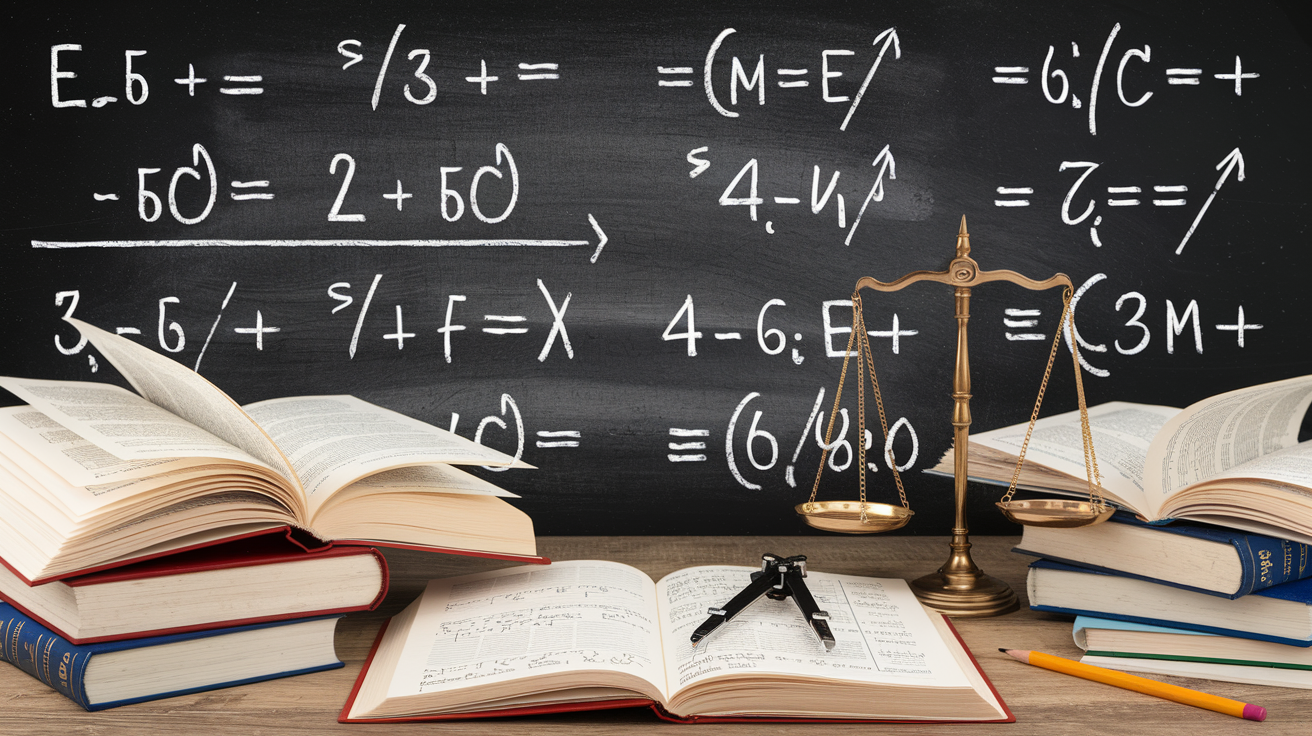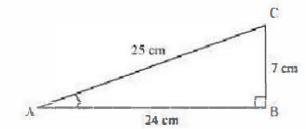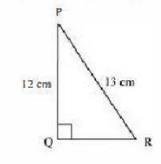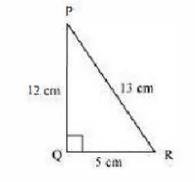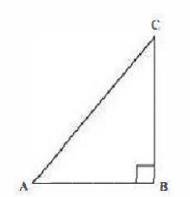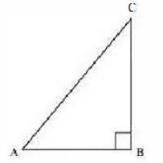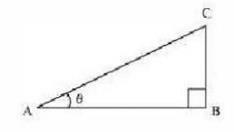6. If \( \angle A \) and \( \angle B \) are acute angles such that \( \cos A=\cos B \), then show that \( \angle A=\angle B \)
Answer
Let us consider a triangle ABC in which \( C D \perp \mathrm{AB} \)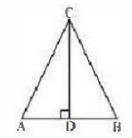
It is given that,
\( \cos A=\cos B \)
\( \Rightarrow \frac{A D}{A C}=\frac{B D}{B C} \ldots(1) \)
We have to prove \( \angle A=\angle B \). To prove this, let us extend AC to P such that \( \mathrm{BC}=\mathrm{CP} \)
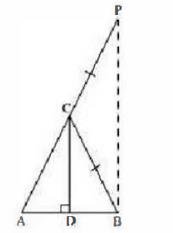
From equation (1) we obtain,
\(\frac{A D}{B D}=\frac{A C}{B C}\quad(\text { By construction, we have } B C=C P)\)
\(\Rightarrow \frac{A D}{B D}=\frac{A C}{C P} \ldots(2)\)
By using the converse of B.P.T,
\( \mathrm{CD} \| \mathrm{BP} \)
\( \Rightarrow \angle \mathrm{ACD}=\angle \mathrm{CPB} \) ( Corresponding angles ) \( \ldots (3)\)
And, \( \angle \mathrm{BCD}=\angle \mathrm{CBP} \) (Alternate interior angles) \( \ldots (4)\)
By construction, we have \( \mathrm{BC}=\mathrm{CP} \).
\( \therefore \angle \mathrm{CBP}=\angle \mathrm{CPB} \) (Angle opposite to equal sides of a triangle) \( \ldots (5)\)
From equations (3), (4), and (5), we obtain
\(\angle \mathrm{ACD}=\angle \mathrm{BCD} \ldots(6)\)
\(\angle C D A=\angle C D B\left[B o t h 90^{\circ}\right]\)
Therefore, the remaining angles should be equal.
\(\therefore \angle C A D=\angle C B D\)
\(\Rightarrow \angle A=\angle B\)
Alternatively,
Let us consider triangle ABC in which \( C D \perp A B \)
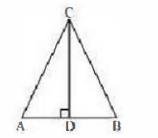
It is given that,
\( \operatorname{Cos} A=\operatorname{Cos} B \)
\( \Rightarrow \frac{A D}{A C}=\frac{B D}{B C} \)
\( \Rightarrow \frac{A D}{B D}=\frac{A C}{B C} \)
Let \( \frac{A D}{B D}=\frac{A C}{B C}=k \)
\( \Rightarrow A D=k B D \ldots(1) \)
And, \( A C=k B C \ldots(2) \)
using Pythagoras theorem for triangles CAD and CBD, we obtain \( \mathrm{CD}^{2}=\mathrm{AC}^{2}-\mathrm{AD}^{2} \ldots(3) \)
And, \( \mathrm{CD}^{2}=\mathrm{BC}^{2}-\mathrm{BD}^{2} \ldots \) (4)
From equations (3) and (4), we obtain
\(\mathrm{AC}^{2}-\mathrm{AD}^{2}=\mathrm{BC}^{2}-\mathrm{BD}^{2}\)
\(\Rightarrow(k B C)^{2}-(k B D)^{2}=B C^{2}-B D^{2}\)
\(\Rightarrow k^{2}\left(B C^{2}-B D^{2}\right)=B C^{2}-B D^{2}\)
\(\Rightarrow k^{2}=1\)
\(\Rightarrow k=1\)
Putting this value in equation (2), we obtain
\( \mathrm{AC}=\mathrm{BC} \)
\( \Rightarrow \angle A=\angle B \) (Angles opposite to equal sides of a angle)
CBSE Class 10 Maths Chapter 8 Introduction to Trigonometry Ex 8.1 || NCERT Solutions for Class 10 Maths Chapter 8: Introduction to Trigonometry(English Medium)
Download the Math Ninja App Now7. If \( \cot \theta=\frac{7}{8} \), evaluate
(i) \( \frac{(1+\sin \theta)(1-\sin \theta)}{(1+\cos \theta)(1-\cos \theta)} \)
(ii) \( \cot ^{2} \theta \)
(i) \( \frac{(1+\sin \theta)(1-\sin \theta)}{(1+\cos \theta)(1-\cos \theta)} \)
(ii) \( \cot ^{2} \theta \)
Answer
Let us consider a right triangle ABC , right-angled at point B .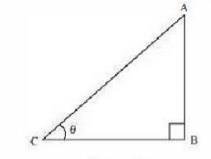
\(\cot \theta =\frac{\text { Side adjacent to } \angle \theta}{\text { Side opposite to } \angle \theta}=\frac{\mathrm{BC}}{\mathrm{AB}}\)
\( =\frac{7}{8}\)
If \( B C \) is \( 7 k \), then \( A B \) will be \( 8 k \), where \( k \) is a positive integer.
Applying Pythagoras theorem in \( \triangle \mathrm{ABC} \), we obtain
\(A C^{2}=A B^{2}+B C^{2}\)
\(=(8 k)^{2}+(7 k)^{2}\)
\(=64 k^{2}+49 k^{2}\)
\(=113 k^{2}\)
\(A C=\sqrt{113} k\)
\(\sin \theta=\frac{\text { Side opposite to } \angle \theta}{\text { Hypotenuse }}=\frac{\mathrm{AB}}{\mathrm{AC}}\)
\(=\frac{8 k}{\sqrt{113} k}=\frac{8}{\sqrt{113}}\)
\(\cos \theta =\frac{\text { Side adjacent to } \angle \theta}{\text { Hypotenuse }}=\frac{\mathrm{BC}}{\mathrm{AC}}\)
\(= \frac{7 k}{\sqrt{113} k}=\frac{7}{\sqrt{113}} \)
(i) \( \frac{(1+\sin \theta)(1-\sin \theta)}{(1+\cos \theta)(1-\cos \theta)}=\frac{\left(1-\sin ^{2} \theta\right)}{\left(1-\cos ^{2} \theta\right)} \)
\(=\frac{1-\left(\frac{8}{\sqrt{113}}\right)^{2} 1-\frac{64}{113}}{1-\left(\frac{7}{\sqrt{113}}\right)^{2}1-\frac{49}{113}}\)
\( =\frac{\frac{49}{113}}{\frac{64}{113}}=\frac{49}{64} \)
(ii) \( \cot ^{2} \theta=(\cot \theta)^{2}=\left(\frac{7}{8}\right)^{2}=\frac{49}{64} \)
CBSE Class 10 Maths Chapter 8 Introduction to Trigonometry Ex 8.1 || NCERT Solutions for Class 10 Maths Chapter 8: Introduction to Trigonometry(English Medium)
Download the Math Ninja App Now
8. If \( 3 \cot A=4 \), Check whether \( \frac{1-\tan ^{2}}{1+\tan ^{2}} \frac{A}{A}=\cos ^{2} A-\sin ^{2} A \) or not.
Answer
It is given that \( 3 \operatorname{Cot} A=4 \)Or, \( \operatorname{Cot} A=\frac{4}{3} \)
Consider a right triangle ABC , right-angled at point B .
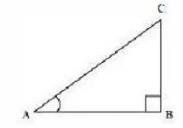
\(\cot A=\frac{\text { Side adjacent to } \angle A}{\text { Side opposite to } \angle A}\)
\(\frac{A B}{B C}=\frac{4}{3}\)
If AB is \(4 k \), then BC will be \(3 k \), where \(k\) is a positive integer.
In \( \triangle A B C \),
\((A C)^{2}=(A B)^{2}+(B C)^{2}\)
\(=(4 k)^{2}+(3 k)^{2}\)
\(=16 k^{2}+9 k^{2}\)
\(=25 k^{2}\)
\(A C=5 k\)
\(\cos A =\frac{\text { Side adjacent to } \angle A}{\text { Hypotenuse }}=\frac{A B}{A C}\)
\( =\frac{4 k}{5 k}=\frac{4}{5}\)
\(\sin A =\frac{\text { Side opposite to } \angle A}{\text { Hypotenuse }}=\frac{B C}{A C}\)
\( =\frac{3 k}{5 k}=\frac{3}{5}\)
\(\tan A =\frac{\text { Side opposite to } \angle A}{\text { Hypotenuse }}=\frac{B C}{A B}\)
\( =\frac{3 k}{4 k}=\frac{3}{4}\)
\(\frac{1-\tan ^{2} A}{1+\tan ^{2} A}=\frac{1-\left(\frac{3}{4}\right)^{2}}{1+\left(\frac{3}{4}\right)^{2}}=\frac{1-\frac{9}{16}}{1+\frac{9}{16}}\)
\(=\frac{\frac{7}{16}}{\frac{25}{16}}=\frac{7}{25}\)
\(\cos ^{2} A-\sin ^{2} A=\left(\frac{4}{5}\right)^{2}-\left(\frac{3}{5}\right)^{2}\)
\(=\frac{16}{25}-\frac{9}{25}=\frac{7}{25}\)
\(\therefore \frac{1-\tan ^{2} A}{1+\tan ^{2} A}=\cos ^{2} A-\sin ^{2} A\)
CBSE Class 10 Maths Chapter 8 Introduction to Trigonometry Ex 8.1 || NCERT Solutions for Class 10 Maths Chapter 8: Introduction to Trigonometry(English Medium)
Download the Math Ninja App Now9. In \( \triangle A B C \), right angled at \( B \). If \( A=\frac{1}{\sqrt{3}} \), find the value of
(i) \( \sin A \cos C+\cos A \sin C \)
(ii) \( \cos A \cos C-\sin A \sin C \)
(i) \( \sin A \cos C+\cos A \sin C \)
(ii) \( \cos A \cos C-\sin A \sin C \)
Answer
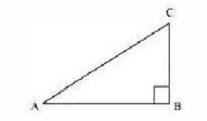
\(\tan A=\frac{1}{\sqrt{3}}\)
\(\frac{B C}{A B}=\frac{1}{\sqrt{3}}\)
If \( B C \) is \( k \), then \( A B \) will be, where \( k \) is a positive integer.
In \( \triangle A B C \),
\(\mathrm{A} C^{2}=\mathrm{AB}^{2}+\mathrm{BC}^{2}\)
\(=(\sqrt{3} k)^{2}+(k)^{2}\)
\(=3 \mathrm{k}^{2}+\mathrm{k}^{2}=4 \mathrm{k}^{2}\)
\(\therefore \mathrm{AC}=2 \mathrm{k}\)
\(\sin A=\frac{\text { Side opposite to } \angle A}{\text { Hypotenuse }}=\frac{B C}{A C}=\frac{k}{2 k}=\frac{1}{2}\)
\(\cos A=\frac{\text { Side adjacent to } \angle A}{\text { Hypotenuse }}=\frac{A B}{A C}=\frac{\sqrt{3} k}{2 k}=\frac{\sqrt{3}}{2}\)
\(\sin C=\frac{\text { Side opposite to } \angle C}{\text { Hypotenuse }}=\frac{A B}{A C}=\frac{\sqrt{3 k}}{2 k}=\frac{\sqrt{3}}{2}\)
\(\cos C=\frac{\text { Side adjacent to } \angle C}{\text { Hypotenuse }}=\frac{B C}{A C}=\frac{k}{2 k}=\frac{1}{2}\)
(i) \( \sin A \cos C+\cos A \sin C \)
\(=\left(\frac{1}{2}\right)\left(\frac{1}{2}\right)+\left(\frac{\sqrt{3}}{2}\right)\left(\frac{\sqrt{3}}{2}\right)=\frac{1}{4}+\frac{3}{4}\)
\(=\frac{4}{4}=1\)
(ii) \( \cos A \cos C-\sin A \sin C \)
\(=\left(\frac{\sqrt{3}}{2}\right)\left(\frac{1}{2}\right)-\left(\frac{1}{2}\right)\left(\frac{\sqrt{3}}{2}\right)=\frac{\sqrt{3}}{4}-\frac{\sqrt{3}}{4}=0\)
10. In \( \triangle \mathrm{PQR} \), right angled at \( \mathrm{Q}, \mathrm{PR}+\mathrm{QR}=25 \mathrm{~cm} \) and \( \mathrm{PQ}=5 \mathrm{~cm} \). Determine the values of \( \sin P, \cos P \) and \( \tan P \)
Answer
Given that, \( \mathrm{PR}+\mathrm{QR}=25 \)\(P Q=5\)
Let \( P R \) be \( x \).
Therefore, \( \mathrm{QR}=25-x \)
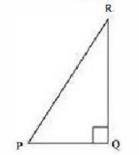
Applying Pythagoras theorem in \( \triangle P Q R \), we obtain
\(\mathrm{PR}^{2}=\mathrm{PQ}^{2}+\mathrm{QR}^{2}\)
\(x^{2}=(5)^{2}+(25-x)^{2}\)
\(x^{2}=25+625+x^{2}-50 x\)
\(50 x=650\)
\(x=13\)
Therefore, \( \mathrm{PR}=13 \mathrm{~cm} \)
\(\mathrm{QR}=(25-13) \mathrm{cm}=12 \mathrm{~cm}\)
\(\sin \mathrm{P}=\frac{\text { Side opposite to } \angle \mathrm{P}}{\text { Hypotenuse }}=\frac{\mathrm{QR}}{\mathrm{PR}}=\frac{12}{13}\)
\(\cos P=\frac{\text { Side adjacent to } \angle P}{\text { Hypotenuse }}=\frac{P Q}{P R}=\frac{5}{13}\)
\(\tan P=\frac{\text { Side opposite to } \angle P}{\text { Side adjacent to } \angle P}=\frac{Q R}{P Q}=\frac{12}{5}\)
11.
(i) State whether the following are true or false. Justify your answer.
The value of \( \tan A \) is always less than 1.
The value of \( \tan A \) is always less than 1.
Answer
Consider a \( \triangle \mathrm{ABC} \), right-angled at \( B \).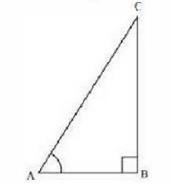
\( \tan A=\frac{\text { Side opposite to } \angle A}{\text { Side adjacent to } \angle A} \)
\(=\frac{12}{5}\)
But \( \frac{12}{5} > 1 \)
\( \therefore \tan A > 1 \)
So, \( \tan A < 1 \) is not always true.
Hence, the given statement is false.
(ii) State whether the following are true or false. Justify your answer.
\( \sec A=\frac{12}{5} \) for some value of angle A .
\( \sec A=\frac{12}{5} \) for some value of angle A .
Answer
\( \sec A=\frac{12}{5} \)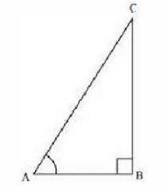
\(\frac{\text { Hypotenuse }}{\text { Side adjacent to } \angle A}=\frac{12}{5}\)
\(\frac{\mathrm{AC}}{\mathrm{AB}}=\frac{12}{5}\)
Let \( A C \) be \( 12 k, A B \) will be \( 5 k \), where \( k \) is a positive integer.
Applying Pythagoras theorem in \( \triangle \mathrm{ABC} \), we obtain
\(A C^{2}=A B^{2}+B C^{2}\)
\((12 k)^{2}=(5 k)^{2}+B C^{2}\)
\(144 k^{2}=25 k^{2}+B C^{2}\)
\(B C^{2}=119 k^{2}\)
\(B C=10.9 k\)
It can be observed that for given two sides \( A C=12 k \) and \( A B=5 k \), BC should be such that,
\(\mathrm{AC}-\mathrm{AB} < \mathrm{BC} < \mathrm{AC}+\mathrm{AB}\)
\(12 \mathrm{k}-5 \mathrm{k} < \mathrm{BC} < 12 \mathrm{k}+5 \mathrm{k}\)
\(7 \mathrm{k} < \mathrm{BC} < 17 \mathrm{k}\)
However, \( B C=10.9 \mathrm{k} \). Clearly, such a triangle is possible and hence, such value of \( \sec A \) is possible.
Hence, the given statement is true.
(iii) State whether the following are true or false. Justify your answer.
\( \cos A \) is the abbreviation used for the cosecant of angle A .
\( \cos A \) is the abbreviation used for the cosecant of angle A .
Answer
Abbreviation used for cosecant of angle A is \( \operatorname{cosec} \mathrm{A} \). And \( \cos \mathrm{A} \) is the abbreviation used for cosine of angle A.Hence, the given statement is false.
(iv) State whether the following are true or false. Justify your answer.
\( \cot \mathrm{A} \) is the product of \( \cot \) and A
\( \cot \mathrm{A} \) is the product of \( \cot \) and A
Answer
\( \cot A \) is not the product of \( \cot \) not \( A \). It is the cotangent of \( \angle A \).Hence, the given statement is false.
(v) State whether the following are true or false. Justify your answer.
\( \sin \theta=\frac{4}{3} \), for some angle \( \theta \)
\( \sin \theta=\frac{4}{3} \), for some angle \( \theta \)
Answer
\( \sin \theta=\frac{4}{3} \)We know that in a right-angled triangle,
\(\sin \theta=\frac{\text { Side opposite to } \angle \theta}{\text { Hypotenuse }}\)
In a right-angled triangle, hypotenuse is always greater than the remaining two sides.
Therefore, such value of \( \sin \theta \) is not possible.
Hence, the given statement is false.
CBSE Class 10 Maths Chapter 8 Introduction to Trigonometry Ex 8.1 || NCERT Solutions for Class 10 Maths Chapter 8: Introduction to Trigonometry(English Medium)
Download the Math Ninja App NowCentral Board of Secondary Education Official Site
Class 10 : NCERT Solutions for Class 10 Maths Chapter 1 Exercise 1.1
Class 10 : NCERT Solutions for Class 10 Maths Chapter 1 Exercise 1.2
Class 10 : NCERT Solutions for Class 10 Maths Chapter 1 Exercise 1.3
Class 10 : CBSE Class 10 Maths Chapter 2 Polynomials Ex 2.1
Class 10 : CBSE Class 10 Maths Chapter 2 Polynomials Ex 2.2
Class 10 : CBSE Class 10 Maths Chapter 2 Polynomials Ex 2.4
Class 10 : CBSE Class 10 Maths Chapter 3 Pair of Linear Equations in Two Variables Ex 3.1
Class 10 : CBSE Class 10 Maths Chapter 3: Pair of Linear Equations in Two Variables || CBSE Class 10 Maths Chapter 3 Pair of Linear Equations in Two Variables solutions Ex 3.2
Class 10 : CBSE Class 10 Maths Chapter 3: Pair of Linear Equations in Two Variables || CBSE Class 10 Maths Chapter 3 Pair of Linear Equations in Two Variables solutions Ex 3.3
Class 10 : CBSE Class 10 Maths Chapter 3: Pair of Linear Equations in Two Variables || CBSE Class 10 Maths Chapter 3 Pair of Linear Equations in Two Variables solutions Ex 3.4
Class 10 : CBSE Class 10 Maths Chapter 3: Pair of Linear Equations in Two Variables || CBSE Class 10 Maths Chapter 3 Pair of Linear Equations in Two Variables solutions Ex 3.5
Class 10 : CBSE Class 10 Maths Chapter 3: Pair of Linear Equations in Two Variables || CBSE Class 10 Maths Chapter 3 Pair of Linear Equations in Two Variables solutions Ex 3.6
Class 10 : CBSE Class 10 Maths Chapter 4 Quadratic Equations Ex 4.1 || NCERT Solutions for Class 10 Maths Chapter 4: Quadratic Equations (English Medium)
Class 10 : CBSE Class 10 Maths Chapter 4 Quadratic Equations Ex 4.2 || NCERT Solutions for Class 10 Maths Chapter 4: Quadratic Equations (English Medium)
Class 10 : CBSE Class 10 Maths Chapter 4 Quadratic Equations Ex 4.3 || NCERT Solutions for Class 10 Maths Chapter 4: Quadratic Equations (English Medium)
Class 10 : CBSE Class 10 Maths Chapter 5 Arithmetic Progressions Ex 5.1
Class 10 : CBSE Class 10 Maths Chapter 5 Arithmetic Progressions Ex 5.2
Class 10 : CBSE Class 10 Maths Chapter 5 Arithmetic Progressions Ex 5.3
Class 10 : NCERT Math Solutions for Class 10 Maths Chapter 6 Triangle(English Medium) || CBSE Class 10 Maths Chapter 6 Triangle Ex 6.1
Class 10 : NCERT Math Solutions for Class 10 Maths Chapter 6 Triangle(English Medium) || CBSE Class 10 Maths Chapter 6 Triangle Ex 6.2
Class 10 : NCERT Math Solutions for Class 10 Maths Chapter 6 Triangle(English Medium) || CBSE Class 10 Maths Chapter 6 Triangle Ex 6.3
Class 10 : NCERT Math Solutions for Class 10 Maths Chapter 6 Triangle(English Medium) || CBSE Class 10 Maths Chapter 6 Triangle Ex 6.4
Class 10 : NCERT Math Solutions for Class 10 Maths Chapter 6 Triangle(English Medium) || CBSE Class 10 Maths Chapter 6 Triangle Ex 6.5
Class 10 : NCERT Math Solutions for Class 10 Maths Chapter 6 Triangle(English Medium) || CBSE Class 10 Maths Chapter 6 Triangle Ex 6.6
Class 10 : NCERT Math Solutions for Class 10 Maths Chapter 7 Coordinate Geometry(English Medium) || CBSE Class 10 Maths Chapter 7 Coordinate Geometry Ex 7.1
Class 10 : NCERT Solutions for Class 10 Maths Chapter 8 Exercise 8.2
Class 10 : CBSE Class 10 Maths Chapter 10 Circles solutions Ex 10.2
Class 10 : CBSE Class 10 Maths Chapter 13 Surface Areas and Volumes solutions Ex 13.2
